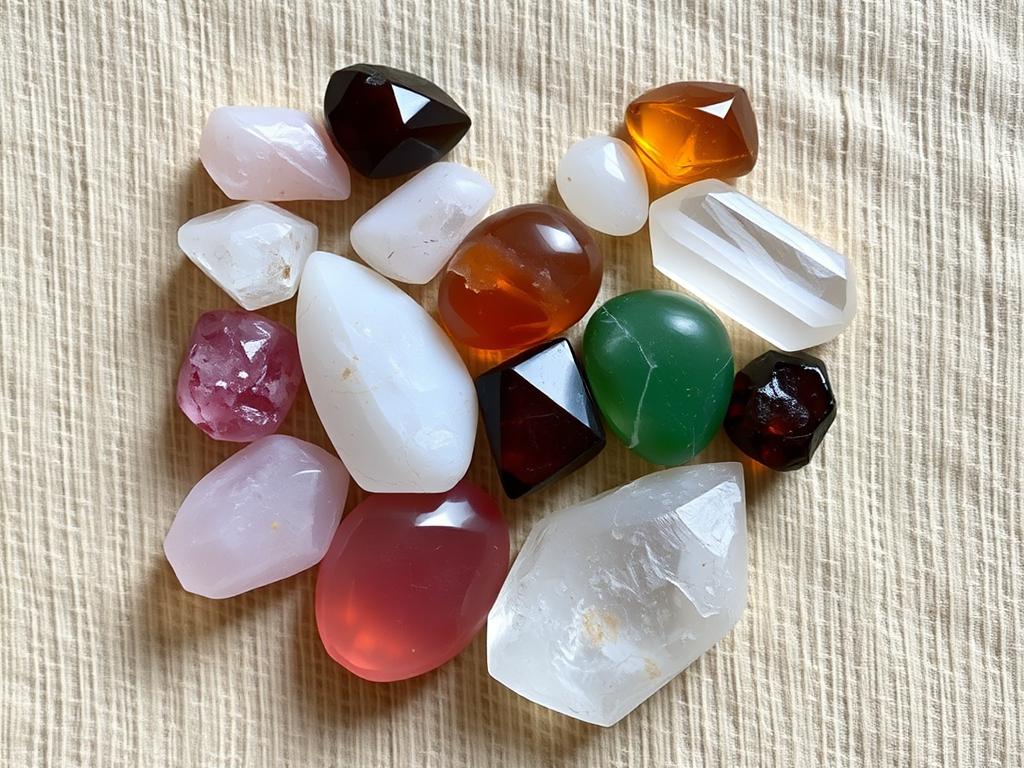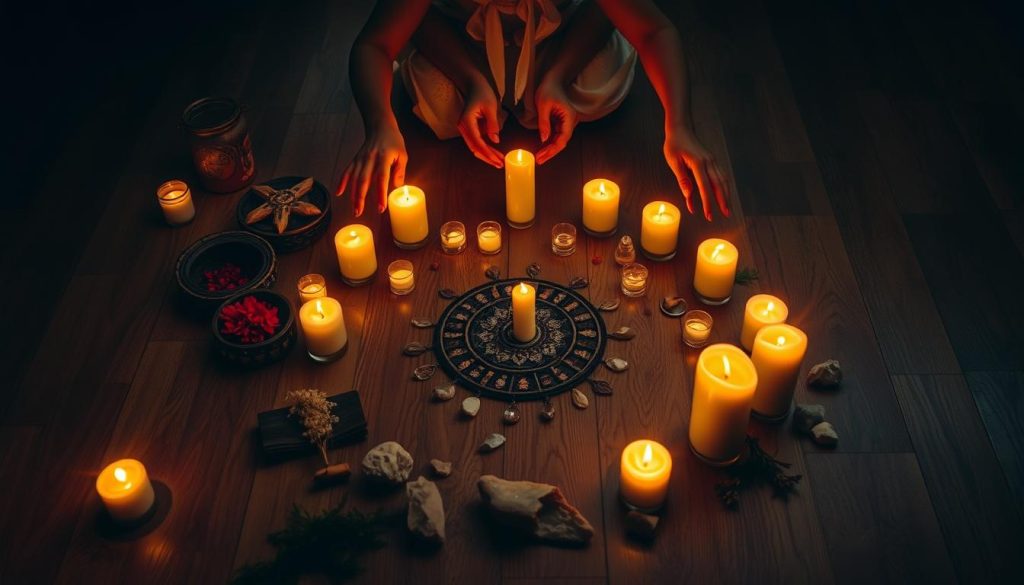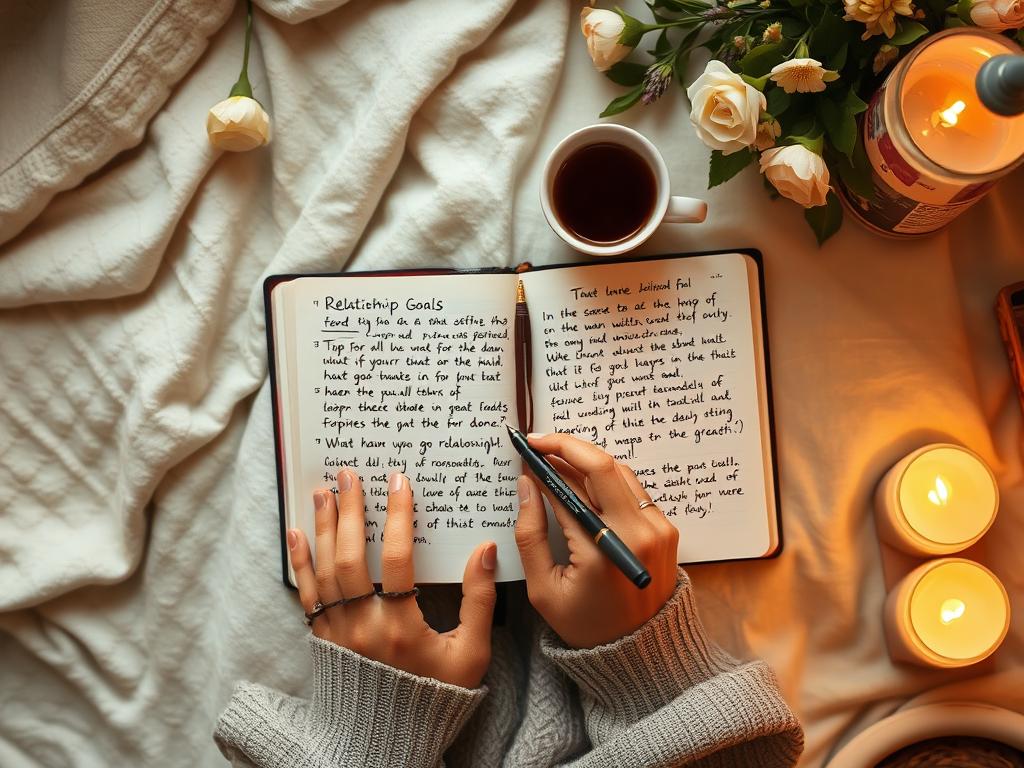Throughout human history, people have turned to mystical practices to influence matters of the heart. Marriage spells represent one of the oldest forms of love magic, spanning diverse cultures and spiritual traditions worldwide. These rituals aim to attract commitment, strengthen existing bonds, or reignite passion between partners. While some view these practices with skepticism, others find comfort in these ancient traditions that connect them to their cultural heritage and offer hope during relationship challenges.
This guide explores the rich tapestry of marriage spell traditions, examines important ethical considerations, and provides practical information for those interested in understanding these practices from a cultural and historical perspective.
Historical and Cultural Roots of Marriage Spells
Ancient artifacts related to marriage rituals across different cultures
Marriage spells have deep roots in numerous cultural traditions, each with unique approaches and symbolic elements. Understanding these diverse perspectives provides valuable context for appreciating the significance of these practices.
African Traditions
In many African cultures, marriage spells are deeply intertwined with ancestral veneration and community bonds. Traditional healers, known by various names like sangomas or obeah practitioners, often serve as intermediaries between the physical and spiritual realms. These practitioners may use herbs, animal parts, and ceremonial objects to create powerful talismans meant to attract or strengthen marital bonds.
The concept of binding is particularly significant in these traditions, symbolizing the unification of not just two individuals but two family lineages. Many African marriage rituals involve community participation, emphasizing that marriage is a social contract that extends beyond the couple.
Wiccan and Pagan Approaches
In Wiccan traditions, marriage spells often focus on harmony, mutual respect, and balanced energy between partners. These practices typically emphasize free will and ethical considerations, with many practitioners following the Wiccan Rede: “An it harm none, do what ye will.”
Common elements in Wiccan marriage spells include candle magic (often using colors like red for passion and pink for romantic love), moon phases (particularly the waxing moon for growth), and herbal components like rose petals for love and lavender for harmony.
Hindu Traditions
Hindu marriage rituals contain numerous elements that could be considered forms of marriage spells. The ancient practice of Vashikaran, for instance, involves mantras and rituals designed to attract a specific person or strengthen marital bonds. These practices are often performed with the guidance of a knowledgeable guru or priest.
Traditional Hindu marriage ceremonies themselves contain numerous symbolic elements meant to ensure a harmonious union, including tying knots, exchanging garlands, and circling sacred fires—all representing binding commitments and spiritual protection.
European Folk Magic
European folk traditions offer rich examples of marriage spells, from Celtic knot magic symbolizing eternal bonds to Slavic rituals involving honey and herbs to sweeten a relationship. In many European cultures, specific days like Midsummer’s Eve or St. Valentine’s Day were considered especially powerful for love magic.
These traditions often incorporated everyday household items imbued with symbolic meaning—mirrors to reflect desired futures, locks and keys to represent security and access to the heart, and knotted cords to bind lovers together.
Ethical Considerations in Marriage Spells
⚠️ This article is for informational purposes only. Always respect others’ autonomy and free will when considering any practice that might influence another person.
The ethics of marriage spells represent perhaps the most important consideration for anyone exploring these practices. Central to this discussion is the concept of consent and free will—principles that vary significantly across different magical traditions and personal belief systems.

Ethical reflection is essential before engaging with any form of relationship magic
The Question of Consent
Many modern practitioners draw a clear ethical line: spells that attempt to manipulate another person’s feelings or override their free will are considered unethical. This perspective emphasizes that true love must be freely given, not magically coerced.
More ethically aligned approaches focus on:
- Self-improvement spells that make oneself more open to love
- General attraction spells that invite compatible partners rather than targeting specific individuals
- Harmony spells that enhance existing relationships where both parties desire improvement
- Clarity spells that help reveal true feelings rather than creating artificial ones
Potential Consequences
Many magical traditions teach that manipulative spells can have unintended consequences. These may include:
Potential Negative Outcomes
- Relationships built on magical coercion often develop unhealthy dynamics
- The “threefold law” in some traditions suggests negative energy returns multiplied
- Psychological guilt can undermine the relationship’s foundation
- Dependency and obsession rather than genuine love may result
- Eventual resentment when the influenced person feels their autonomy was violated
Ethical Alternatives
- Self-focused spells for personal growth and openness to love
- Rituals performed with a partner’s knowledge and consent
- Spells that attract compatible partners without specifying individuals
- Rituals that enhance communication and understanding
- Practices that help release attachment to outcomes
Cultural Context and Ethical Relativism
It’s important to acknowledge that ethical frameworks around marriage spells vary across cultures. What might be considered manipulative in one tradition could be viewed as a normal part of relationship formation in another. This doesn’t negate the importance of ethical consideration but reminds us to approach these practices with cultural sensitivity and awareness.
When exploring marriage spells from various traditions, consider the cultural context while still applying your own ethical standards. Respect for human dignity and autonomy provides a useful ethical foundation regardless of which tradition you’re drawing from.
Types of Marriage Spells
Marriage spells come in many forms, each with distinct purposes, ingredients, and methodologies. Understanding these variations can help you appreciate the rich diversity of these practices across cultures and traditions.

Common ingredients used in various types of marriage spells
Candle Rituals for Commitment
Candle magic represents one of the most accessible and widely practiced forms of marriage spellwork. These rituals harness the transformative power of fire to manifest intentions.
Twin Flame Candle Ritual
This ritual uses two candles to represent the couple, gradually bringing them together as they burn.
Symbolic ingredients:
- Two taper candles (red for passion, pink for romantic love, or white for pure intention)
- Oils such as rose, jasmine, or ylang-ylang for anointing
- A fireproof plate or holder
- Optional: rose quartz crystals for enhancing loving energy
The candles are placed at opposite ends of the holder and gradually moved closer with each ritual performance, symbolizing the growing bond between partners.
Binding Spells for Lasting Unions
Binding spells represent some of the oldest forms of marriage magic, symbolically tying two people together. These rituals use physical binding as a metaphor for emotional and spiritual connection.
The Cord Binding Ritual
This ritual uses cord or ribbon to symbolically bind two people together in commitment.
Symbolic ingredients:
- Three cords in colors representing different aspects of the relationship (red for passion, blue for communication, gold for longevity)
- Personal items from both individuals
- Herbs such as rosemary for fidelity and lavender for harmony
The cords are braided together while speaking intentions for the relationship, then tied in a series of knots, each representing a specific blessing or intention for the union.
Ancestral Invocations for Blessed Unions
Many cultural traditions believe that ancestors can bless and protect marriages. These rituals call upon family lineages for support and guidance.
Ancestral Blessing Ceremony
This ritual honors family lineages and invites ancestral blessings on a union.
Symbolic ingredients:
- Family heirlooms or photographs
- White candles to honor ancestors
- Traditional foods from family heritage
- A written genealogy or family tree
The ceremony involves creating an altar with family items, sharing stories of successful marriages in the family, and explicitly asking for guidance and blessing from those who came before.
Honey Jar Spells for Sweetening Relationships
Honey jar spells are found in various traditions, particularly in folk magic practices. They use the sweetness of honey as a metaphor for creating harmonious relationships.
Marriage Sweetening Jar
This ritual uses honey to symbolically sweeten and preserve a relationship.
Symbolic ingredients:
- A small jar of honey (preferably locally sourced)
- Cinnamon for passion and attraction
- Vanilla for comfort and familiarity
- Rose petals for romantic love
- Names written on paper or photographs of the couple
The ingredients are layered in the jar while speaking intentions for the relationship. The jar is then sealed and kept in a special place, often turned or stirred periodically while reinforcing positive intentions.
Crystal Rituals for Relationship Harmony
Crystals have long been used in marriage spells for their ability to store and transmit energy. Different stones are associated with various relationship qualities.

Crystals commonly used in marriage spells and rituals
Crystal Grid for Marriage Harmony
This ritual creates a geometric pattern of crystals to generate harmonious energy for a relationship.
Symbolic ingredients:
- Rose quartz for unconditional love
- Moonstone for new beginnings
- Jade for harmony and balance
- Garnet for passion and commitment
- Clear quartz to amplify the energy of other stones
The crystals are arranged in a sacred geometric pattern, often with a photograph or written names of the couple in the center. The grid is activated through intention and can be kept in the bedroom or another significant space.
How to Cast Marriage Spells Safely and Ethically
If you’re interested in exploring marriage spells from a cultural or spiritual perspective, it’s essential to approach these practices with respect, intention, and ethical awareness. The following guidelines can help ensure that your exploration remains positive and aligned with ethical principles.

Creating a sacred space is essential for mindful ritual practice
Step-by-Step Guidelines for Ethical Practice
- Clarify Your Intention
Before beginning any spell work, spend time in reflection to clarify your true intention. Ask yourself: What am I really seeking? Is this about control or connection? Am I respecting the free will of others? The clearer and more ethical your intention, the more aligned your results will be. - Prepare Your Space
Create a clean, quiet environment free from distractions. Many traditions recommend cleansing the space with smoke (from herbs like sage or palo santo) or sound (bells or singing bowls). This step helps create a boundary between everyday life and sacred practice. - Center Yourself Through Meditation
Take time to ground your energy and center your thoughts. Simple breathing exercises or meditation can help clear your mind and focus your intention. This step ensures you’re approaching the ritual from a place of clarity rather than emotional reactivity. - Gather Appropriate Materials
Select materials that align with your intention and cultural or spiritual background. Be mindful of the sourcing of your materials—ethically harvested herbs, fair-trade items, and objects with personal significance often carry the most positive energy. - Perform the Ritual with Focused Attention
During the ritual itself, maintain focused attention on your intention. Many traditions emphasize that the power of spellwork comes not from the materials but from the practitioner’s focused will and energy. - Close the Ritual Properly
Always formally close your ritual space. This might involve thanking any energies or entities you’ve called upon, extinguishing candles safely, and taking a moment to transition back to everyday awareness. - Release Attachment to Outcomes
After completing your ritual, release attachment to specific outcomes. Many traditions teach that clinging to particular results can actually block the energy of your spell. Trust that the energy will manifest in the way that serves the highest good.
Ethical Warnings and Considerations
Important ethical guidelines to consider:
- Never attempt to override another person’s free will or force feelings that aren’t naturally present
- Avoid performing spells when emotionally distressed, angry, or seeking revenge
- Respect cultural contexts and avoid appropriating practices without understanding their significance
- Consider seeking guidance from experienced practitioners within the tradition you’re exploring
- Remember that spells should complement, not replace, practical efforts to improve relationships
Signs to Reconsider Your Approach
If you experience any of the following, it may be a sign to pause and reconsider your approach to marriage spellwork:
- Persistent feelings of guilt or ethical discomfort
- Obsessive thinking about the spell or its outcome
- Deterioration in your mental or emotional well-being
- Negative changes in the relationship dynamics
- Intuitive feelings that something isn’t right
Remember that the most powerful magic often comes from personal transformation and authentic connection, not from attempting to control external circumstances or other people’s feelings.
Alternatives to Marriage Spells: Building Relationships Naturally
While exploring the cultural and historical significance of marriage spells can be fascinating, many people find that focusing on practical, non-magical approaches to relationship building yields the most sustainable results. These approaches complement spiritual practices and often align with the core intentions behind many marriage spells.

Meaningful communication forms the foundation of strong relationships
Communication Practices
Effective communication often accomplishes what many marriage spells aim to achieve: deeper understanding, harmony, and connection.
Active Listening Ritual
Create a regular practice where each partner has uninterrupted time to express their feelings while the other practices deep listening without planning responses.
How to practice:
- Set aside 20-30 minutes in a comfortable, distraction-free environment
- Use a special object (like a talking stick) that designates whose turn it is to speak
- The listener maintains eye contact and offers their full presence
- After speaking, the listener reflects back what they heard before switching roles
This practice builds the emotional intimacy that many marriage spells seek to create through magical means.
Relationship Rituals
Creating meaningful rituals can infuse relationships with the same intentionality found in marriage spells, without the magical elements.
Gratitude Exchange
Establish a daily or weekly ritual of expressing specific gratitude for your partner.
How to practice:
- Choose a consistent time (perhaps before bed or during a shared meal)
- Each partner shares one specific thing they appreciate about the other from the recent past
- Focus on actions and qualities rather than material things
- Maintain eye contact and speak from the heart
This practice cultivates the appreciation and positive focus that many sweetening spells aim to create.
Professional Support
Sometimes the most effective “magic” comes from working with trained professionals who can help couples navigate challenges.
Couples Counseling
Professional therapists can provide tools and frameworks for addressing relationship challenges. Look for counselors who specialize in evidence-based approaches like Emotionally Focused Therapy (EFT) or the Gottman Method.
Relationship Education
Many communities offer relationship education workshops that teach practical skills for communication, conflict resolution, and emotional intimacy. These programs often provide a supportive community context for relationship growth.
Personal Development
Many traditional marriage spells focus on creating change in another person. A more ethical and often more effective approach is to focus on your own growth and development.

Self-reflection and personal growth contribute to healthier relationships
Self-Reflection Practice
Develop a regular practice of examining your own contributions to relationship patterns.
How to practice:
- Keep a relationship journal where you reflect on interactions without blame
- Notice your own triggers and emotional reactions
- Identify patterns from your family of origin that might be influencing your current relationship
- Set intentions for personal growth that will positively impact your relationship
This practice embodies the self-transformation aspect that underlies many magical traditions, focusing change efforts where they’re most ethical and effective—on yourself.
Conclusion: Honoring Tradition While Embracing Ethics

The journey of love combines tradition, intention, and mutual respect
Marriage spells represent a fascinating intersection of cultural tradition, spiritual practice, and human desire for connection. Throughout history and across cultures, people have turned to these rituals during times of longing, uncertainty, or celebration—seeking to influence one of life’s most profound experiences: loving partnership.
As we’ve explored in this guide, these practices carry rich symbolic meaning and cultural significance. They remind us of humanity’s enduring belief in the power of intention, ritual, and connection to something beyond the material world. Whether viewed as literal magic or psychological tools, marriage spells speak to our deep desire to influence our romantic destinies.
Yet with this exploration comes responsibility. The most meaningful approach to marriage spells honors their cultural contexts while embracing contemporary ethical understandings about consent, autonomy, and respect. This balanced perspective allows us to appreciate these traditions without causing harm.
Perhaps the most powerful “spell” of all is the intentional cultivation of self-awareness, communication skills, and genuine care for others. When we focus our energy on becoming better partners and more conscious individuals, we create the conditions for authentic love to flourish—a magic more powerful than any ritual alone could produce.
Whether you’ve explored this topic out of cultural interest, spiritual curiosity, or personal consideration, remember that the most enduring relationships are built on mutual respect, honest communication, and genuine care—principles that transcend any magical practice and stand as timeless wisdom for the heart.
Continue Your Relationship Journey
If you’re interested in building a stronger relationship through practical, ethical approaches, consider exploring resources on effective communication, emotional intelligence, and relationship psychology.